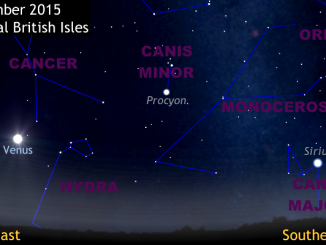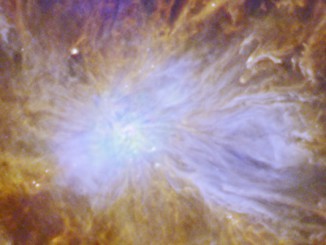
Monoceros



See planet Venus dazzle at greatest brilliancy in the pre-dawn sky
Early risers wishing to see Venus as a dazzling ‘morning star’ need only glance low to the east in the pre-dawn sky. The planet reaches greatest brilliancy on Sunday, 20 September when, for a couple of mornings, it can be seen outshining brightest nighttime star Sirius in the southeast by a factor of seventeen times. Can you see your shadow cast by Venus?

Herschel sees feathery filaments in Mon R2
Fierce flashes of light ripple through delicate tendrils of gas in this new image, from ESA’s Herschel Space Observatory, which shows the dramatic heart of a large and dense cosmic cloud known as Mon R2 in the constellation Monoceros that lies eight degrees east of the Orion Nebula. Mon R2 lies some 2700 light-years away and is studded with hot, newly-formed stars.
